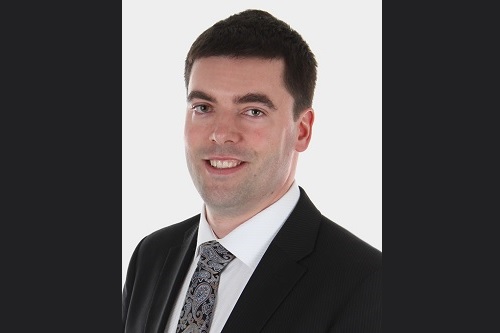For a second-generation financial advisor, success comes from a tradition of doing what’s right

Like many second-generation financial advisors, Cliff Steele had a long-time ambition to join the family business that his father started over twenty years ago. But his ultimate decision to join the industry didn’t come because of any pressure attached to his family name.
“My father always encouraged me to ensure I explored all avenues,” said Steele, Sun Life Financial advisor and group benefits consultant at The Steele Group Financial. “When I was in university, I had the opportunity to take many work terms at various organizations, from pension companies to telecommunications, and even marketing firms. I had around four work terms in totally different fields to make sure that it was right for me and I would be interested in joining.”
His last work term was in the financial services industry, to which he took a shining and developed an interest in pursuing. That, along with his desire to work with his father and join the business he established, led to a career decision that he’s passionate about.
The Steeles have worked with a wide variety of clients, most of whom are average Canadians and families — middle-income earners who need help dealing with various financial and personal-income issues. “Someone could be in a little bit of a jam, not fully understand what’s going on, kind of lost in what direction to take their financial universe, and coming to us for education and clarity,” he said. “Really, what we enjoy is empowering people to make decisions, designing and executing the financial plans and initiatives, and then see them achieve their goals.”
Aside from helping clients with personal investment management, a large part of what Steele and others at his firm do is make sure they’re maximizing and understanding their company savings plans — a service that, given the various features that plan members may need to actively register for or opt out of, is crucial. Once they’re able to set aside a few extra dollars, clients may need advice on what to do with that cash and when. “We take into account their financial objectives and other issues they may not think about necessarily, such as tax consequences,” he said. “If we’re looking at RRSPs versus TFSAs, for example, we have to think about what makes the most sense given their income that year. I find that many people’s incomes aren’t as stable or steady as they used to be, for good or bad, so the ability to review that and figure out what makes sense is pivotal now.”
The firm’s core focus on holistic financial planning has stood since the late ‘90s when many firms preached it but didn’t practice it. “A lot of our firm’s success comes down to models established by my father,” Steele said. “We just do what’s right for people: we help them review their company plans, regardless of which dealer administers it. Every client has a financial plan that lets us know what they’re trying to achieve and how far they’ve come. We’re a team of 11 passionate financial professionals, so clients who need service of any kind, whether it’s assistance with a transaction or more in-depth financial advice, can always get a person and start the process to get what they need or figure out what’s going on.”
That need to figure things out has become more salient among clients given how markets are undergoing disruption after years of relative calm. “There’s a lot of market volatility, and we don’t really see that slowing down too much with the current global political environment,” he said. “That’s obviously something that we’re concerned about from the standpoint of reassuring our clients even as they see the volatility, avoiding making any irrational investment decisions, and really helping to separate their emotions from the numbers and their pre-determined strategies.”
One thing that’s helped Steele’s firm is the fact that they take a long-term approach, looking beyond the past five years of very strong market performance and being more realistic about the future. The inflation numbers and rates of return the firm assumes — he said they generally go with a 5% to 10% rate of return — would be considered by some as pessimistic. But it provides an extra layer of security to help gird clients for challenging times. “Sometimes we’d assume even less to stress-test the plan and make sure they’re meeting their goals,” he said. “We don’t want to over-assume when it comes to a retirement plan.”
Aside from the shifting markets, many financial advisors are concerned about increasing costs and burdens that come with changing compliance and regulatory requirements. That includes a new push from Ontario regulators to have stricter title requirements for financial planners. Overall, Steele believes that such changes are positive for the Canadian investment environment, and it’s down to the individual advisor to manage and see things through.
“I think the big thing is to make sure that the client is taken very seriously,” he said. “There’s a lot of concern around what it means to be a financial advisor, so we always encourage anyone in the business to operate as a professional. If you take that viewpoint around education, service, client interaction, and being able to maintain your value to clients, then you’ll be far more likely to succeed than those who just want to enter the business without making it a career.”



